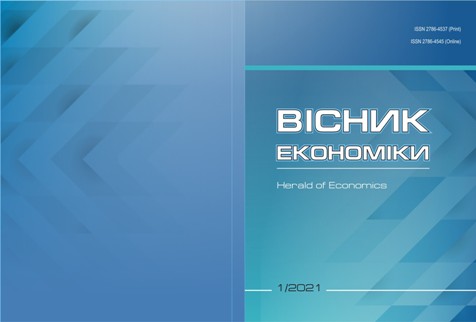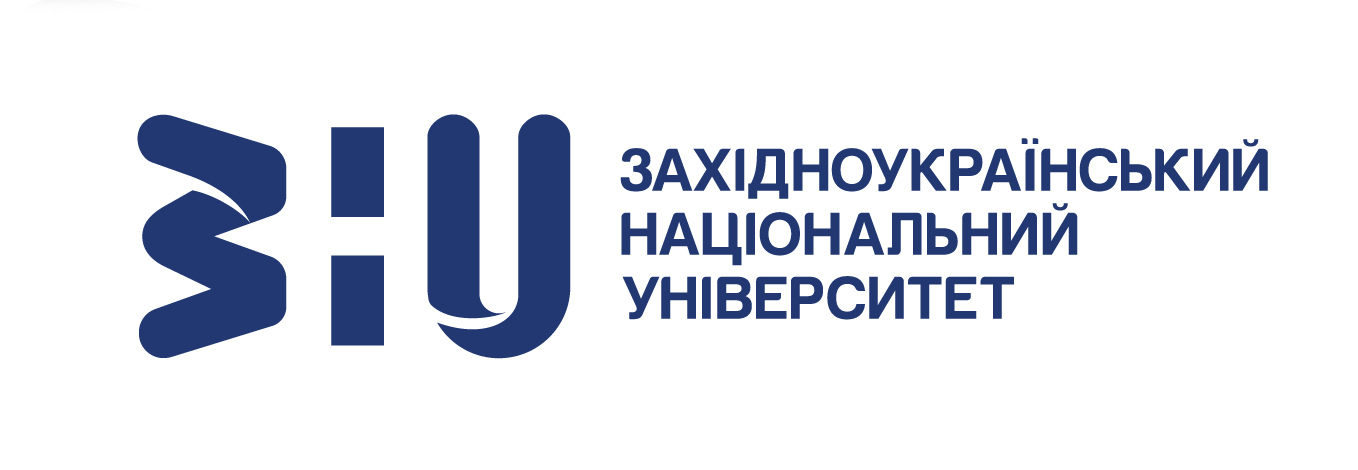Ukraine’s national policy on RES: analysis of international obligations and integration into European energy markets
DOI:
https://doi.org/10.35774/visnyk2024.04.122Keywords:
“green” economy, renewable energy sources, energy efficiency, sustainable development, integration into European energy markets, decarbonization, international obligationsAbstract
Introduction. Ukraine, as it moves toward integration with European markets and fulfills its international climate commitments, faces the necessity of transforming its economy towards sustainable development. A key aspect of this transformation is the adoption of renewable energy sources (RES) and enhancing energy efficiency across all sectors of the economy. Amid the ongoing armed conflict and destruction of energy infrastructure, Ukraine is actively working to restore and modernize its energy sector, aiming to reduce its reliance on imported fossil fuels and align with European energy markets. The adoption of the National Energy and Climate Plan through 2030, which was developed in line with European Union standards and the Paris Climate Agreement, outlines the main strategic development priorities. These include a substantial reduction in greenhouse gas emissions, increasing the share of RES in the national energy mix to 27%, and improving energy efficiency by 30%. These initiatives are designed to ensure a sustainable energy system that will foster economic growth, enhance energy independence, and tackle climate change. Despite Ukraine’s significant potential in renewable energy development – such as solar, wind, and bioenergy—numerous challenges impede the implementation of these projects. The major obstacles include financial instability, institutional barriers, and the ongoing military conflict. However, Ukraine’s national policy is showing positive trends in the adoption of modern green technologies and its gradual integration into the European energy market. This study also highlights the importance of international cooperation in fostering the development of Ukraine’s «green» economy. Support from international financial institutions like the European Bank for Reconstruction and Development and the World Bank plays a crucial role in financing RES and energy efficiency projects. International agreements, including REPowerEU and the European Green Deal, offer Ukraine opportunities to attract additional investments and expedite the energy sector’s reform process. Thus, the development of Ukraine’s national RES policy, alignment with international obligations, and integration into European markets are not only essential for preserving energy independence but are also crucial for achieving the country’s sustainable development goals in the face of climate change and global challenges.
The purpose of the article is to analyze Ukraine’s national policy on renewable energy sources, its alignment with international obligations, and to assess the prospects for Ukraine’s integration into European energy markets.
Research methods. To achieve these objectives, the study uses methods such as system analysis, statistical data analysis, and comparative analysis. The data used comes from both primary and secondary sources, including statistics from the State Statistics Service of Ukraine and international reports on renewable energy development.
Research results. The analysis shows that Ukraine has made some progress in increasing the share of renewable energy in its overall energy consumption. However, substantial investments and international support will be necessary to achieve the goals outlined in the National Plan by 2030. Several scenarios for the development of renewable energy in Ukraine have been considered, with the most optimistic one projecting successful integration into European energy markets.
Research perspectives. Future studies could focus on practical aspects of implementing energy efficiency and decarbonization initiatives, as well as a deeper exploration of the potential for attracting foreign investment in the development of RES in Ukraine.
References
Natsionalʹnyy plan z enerhetyky ta klimatu na period do 2030 roku (2024) [National energy and climate plan for the period up to 2030]. URL: https://me.gov.ua/ Documents/Detail?lang=uk-UA&id=17f558a7-b4b4-42ca b662%202811f42d4a33 &title=NatsionalniiPlanZEnergetikiTaKlimatuNaPeriodDo2030-Roku. [in Ukrainian].
Ukrayina zatverdyla Natsionalʹnyy plan z enerhetyky ta klimatu v denʹ pochatku peremovyn pro vstup do YES (2024) [Ukraine approved the National Energy and Climate Plan on the day of the start of negotiations on joining the EU]. 2024. URL: https://www.kmu.gov.ua/news/ukraina-zatverdyla-natsionalnyi-plan-z-enerhetyky- ta-klimatu-v-den-pochatku-peremovyn-pro-vstup-do-ies. [in Ukrainian].
Uryad ukhvalyv nyzku rishenʹ dlya rozvytku rozpodilenoyi heneratsiyi (2024) [The government adopted a number of decisions for the development of distributed generation]. URL: https://www.kmu.gov.ua/news/uriad-ukhvalyv-nyzku-rishen-dlia- rozvytku-rozpodilenoi-heneratsii. [in Ukrainian].
Derzhenerhoefektyvnosti: 9,2 % - chastka «chystoyi» enerhiyi u kintsevomu enerhospozhyvanni Ukrayiny u 2020 rotsi (2021) [State Energy Efficiency: 9.2 % - the share of “clean” energy in the final energy consumption of Ukraine in 2020]. URL: https://www.kmu.gov.ua/news/derzhenergoefektivnosti-92-chastka-chistoyi- energiyi-u-kincevomu-energospozhivanni-ukrayini-u-2020-roci. [in Ukrainian].
Tracking SDG7: The Energy Progress Report, 2022. (2022). URL: Tracking SDG7: The Energy Progress Report, 2022 – Analysis - IEA. [in English].
The European Green Deal. Striving to be the first climate-neutral continent (2024). URL: https://commission.europa.eu/strategy-and-policy/priorities-2019-2024/ european-green-deal_en. [in English].
Hurochkina, V. V., Kohut, S. S. (2023). Formuvannya enerhetychnoho balansu Ukrayiny z vykorystannyam vidnovlyuvalʹnykh dzherel enerhiyi [Formation of the energy balance of Ukraine using renewable energy sources]. Ekonomika, finansy, menedzhment: aktualʹni pytannya nauky i praktyky – Economics, finance, management: topical issues of science and practice, 4, 109-133. DOI: 10.37128/2411-4413-2023-4-8. [in Ukrainian].
Pro skhvalennya Enerhetychnoyi stratehiyi Ukrayiny na period do 2050 roku (2023). [On the approval of the Energy Strategy of Ukraine for the period up to 2050]. URL: https://zakon.rada.gov.ua/laws/show/373-2023-%D1%80#Text. [in Ukrainian].
Natsionalʹnyy plan z enerhetyky ta klimatu stane vazhlyvym krokom dlya intehratsiyi v YES ta staloho povoyennoho vidnovlennya Ukrayiny (2023). [The National Energy and Climate Plan will be an important step for integration into the EU and sustainable post-war recovery of Ukraine]. URL: https://www.kmu.gov.ua/news/ natsionalnyi-plan-z-enerhetyky-ta-klimatu-stane-vazhlyvym-krokom-dlia-intehratsii- v-ies-ta-staloho-povoiennoho-vidnovlennia-ukrainy. [in Ukrainian].
Vashchyshyn, M. Ya. (2023). Peredumovy formuvannya kontseptsiyi staloho rozvytku ta yiyi vidobrazhennya u stratehiyi ekolohichnoyi polityky Ukrayiny [Prerequisites for the formation of the concept of sustainable development and its reflection in the strategy of environmental policy of Ukraine]. Tsili staloho rozvytku v aspekti zmitsnennya natsionalʹnoho ta mizhnarodnoho pravoporyadku: tezy dopovidey Mizhnarodnoyi naukovo-praktychnoyi konferentsiyi - The goals of sustainable development in the aspect of displacement of the national and international legal order: theses of the reports of the International Scientific and Practical Conference. P. 243-247. [in Ukrainian].
Enerhetychna stratehiya (2022). [Energy strategy]. URL: https://mev.gov.ua/ reforma/enerhetychna-stratehiya. [in Ukrainian].
Our Work on the Sustainable Development Goals in Ukraine (2024). URL: https:// ukraine.un.org/en/sdgs?afd_azwaf_tok=eyJhbGciOiJSUzI1NiJ9.eyJhdWQiOiJ1a 3JhaW5lLnVuLm9yZyIsImV4cCI6MTcyNzIxMzQyNSwiaWF0IjoxNzI3MjEzMTI1L CJpc3MiOiJ0aWVyMS01NGQ1NzQ0Y2Q0LXRqZDg2Iiwic3ViIjoiNDYuMTUwLjc xLjcxIiwiZGF0YSI6eyJ0eXBlIjoiaXNzdWVkIiwicmVmIjoiMjAyNDA5MjRUMjEyNT I1Wi0xNTRkNTc0NGNkNHRqZDg2NGM1OWhkOXc0czAwMDAwMDBhbjAwMD AwMDAwMDBjNWYiLCJiIjoiRVA1VGEtOXFtX3VRc3dSdWNYT0trSXN1cGhfYV 9aSzI3ZnFYYWZLN2U1OCIsImgiOiJQck9iWWVOVUV3dGpOX01ic3ZyMV9ZS2 tXS2tRS0lTeUJGR19obTBhbEFZIn19.mg4d8aJPggfOCPR8aHx2FopC14J4J7f_ I4qn3c8pcybFJlgsfNdO1UjPcAW_AB6UnwsBzLhNC9ZUQdi-ECLtvwM96RsFzZ rXtN9ZoerzpTbuSrRmmewoa8WS3jBGwEqnVqwlK8HJ7y5lPMMc9_3bpSihQlo 7Ru06wz1lJWFgzVhbYtIGsjRepjolzS7uiXCNTG0j2ZDtahbrUk9CWq4h9YzQE_- ShN3Fxdb9Zel-dIrJtkFIy4nAgWmrwsezfk4-pHK0hwmJ2narKfOF879KKvRz1jNt WXGpCey9horXwKE7c3nQw7RKksQkIVQSYy3QSJiCf-VdevH95MWPcQRkvA. WF3obl2IDtqgvMFRqVdYkD5s. [in English].



